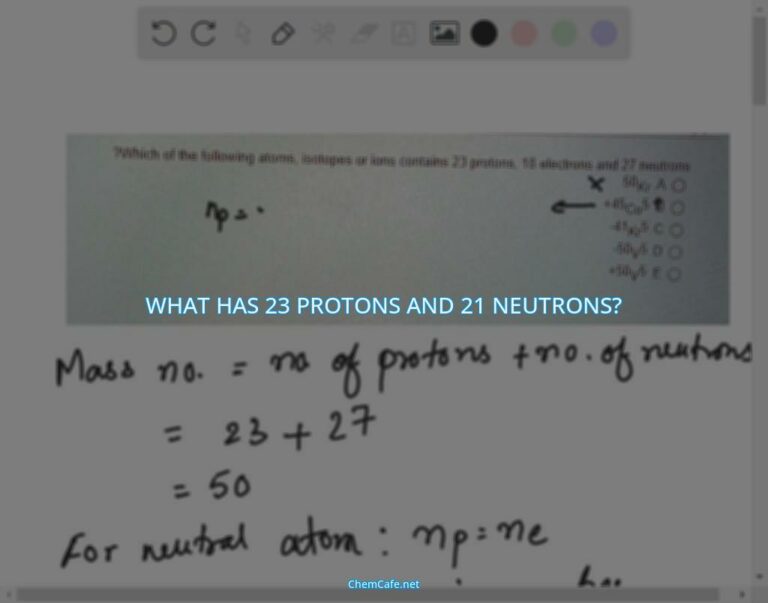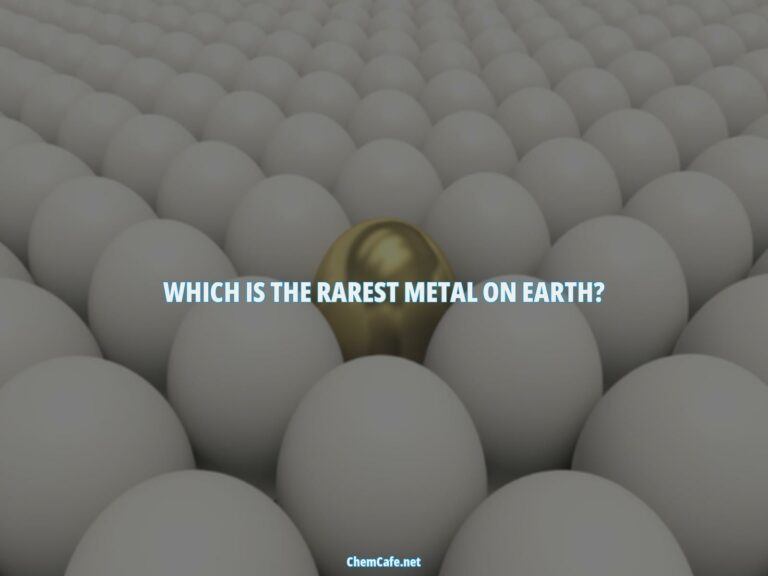Have you ever wondered what is beyond the periodic table? Scientists have long been intrigued by the mysteries of the universe and the elements that make it up. The 118 elements that are currently known are just the beginning, and as scientists continue to learn more about our world, they may be able to create or find even more elements. This article will explore the possibility of a 125th element and answer the question, is element 125 possible?
As of today, there are 118 elements in the periodic table, from hydrogen to the recently discovered elements of Oganesson and Tennessine. But the table is far from complete; there is the possibility of new elements beyond the known 118. Scientists have been able to predict the properties of these potential elements, such as element 125. This element would be a transition metal and would appear in a new row of the periodic table.
If element 125 does exist, it is likely to be a stable element, meaning it will not be radioactive. Tellurium-125 is an example of a stable isotope of tellurium and is both naturally occurring and produced by fission. Other elements that are endangered and in danger of being over-consumed include indium, copper, neodymium and lithium. To help protect these elements, the concept of a circular economy is useful, which focuses on reducing waste and reusing materials.
But what is the 125th element? Scientists do not yet know what the 125th element will be, but they can still predict its properties. While a new element has not been observed yet, it is possible that one will be discovered in the future.
Ultimately, the answer to the question “is element 125 possible?” is yes. Scientists have already predicted the properties of element 125 and it is likely to be a transition metal, similar to other elements such as tellurium-125. It is yet to be seen what the 125th element will be, but scientists are hopeful that with further research and exploration, it will be discovered and added to the periodic table.
Is there a 125th element?
The periodic table of elements is an important tool for scientists to study and understand the properties of different elements. But with the discovery of new elements, the periodic table is becoming increasingly crowded. So, is there a 125th element?
What is the 125th element?
The 125th element on the periodic table is Tellurium, an isotope with a mass of 125. Tellurium-125 is a stable (non-radioactive) isotope of the element Tellurium. It is both naturally occurring and produced by fission. Tellurium is a silvery-white metalloid element that is often used in alloys, electronics, and semiconductors.
Is element 125 possible?
Although we haven’t yet discovered or created elements beyond atomic number 120, scientists can still predict their properties. For example, element 125 has not been observed, but when it is, it will appear in a new row of the periodic table as a transition metal. Therefore, element 125 is theoretically possible.
Is element 137 possible?
Element 137 is not possible, as it is beyond the so-called “Island of Stability,” where elements are stable and can exist for a long time. Thus, atoms with Z > 137 cannot exist.
What is the 125th element?
The 125th element is Tellurium, an isotope of mass 125. Tellurium-125 is a transition metal, which means it has properties of both metals and nonmetals. Tellurium is an essential trace element that is used in alloys, electronics, and semiconductors. It is also one of the endangered elements under serious threat due to unsustainable consumption and a lack of circular economy action.
Will there be a 120th element?
Although scientists have already created elements beyond atomic number 120, there is currently no consensus on their placement in the periodic table. Elements beyond 120 are considered “superheavy” elements and are difficult to create and study. Therefore, there is no guarantee that there will be a 120th element.
Conclusion
In conclusion, element 125 is theoretically possible and is the 125th element on the periodic table. Tellurium-125 is a stable (non-radioactive) isotope of the element Tellurium and is used in alloys, electronics, and semiconductors. Element 137 is not possible, as it is beyond the so-called “Island of Stability” where elements are stable and can exist for a long time. Although scientists have created elements beyond atomic number 120, there is currently no consensus on their placement in the periodic table. For more information about the Tellurium element, please visit the Tellurium element page.
Is there an element 125?
The periodic table of elements is a chart that shows all known chemical elements, arranged in order of increasing atomic number. As of 2021, the table contains 118 confirmed elements, from hydrogen to oganesson. But is there an element 125?
What is the 125th element?
The 125th element is tellurium, an isotope of mass 125. Tellurium125 is a synthetic, radioactive element that does not occur naturally. It has an atomic number of 125 and an atomic mass of 298. This element has a half-life of 3 minutes and decays into oganesson.
Is element 125 possible?
Although there are elements we have not yet created or found in nature, scientists already know what they will be and can predict their properties. For example, element 125 has not been observed, but when it is, it will appear in a new row of the periodic table as a transition metal. This element is expected to have similar properties to its neighbor, mercury, and will be very reactive.
Is element 137 possible?
Element 137, or ununtrium, is the highest element that has been confirmed to exist. It is located in the seventh row of the periodic table. Ununtrium is a synthetic element and has an atomic number of 137 and an atomic mass of 294. This element has a half-life of about 0.89 seconds and decays into bismuth-209.
Is element 123 possible?
Unbitrium (pronounced /uːnˈbaɪtriəm/), also known as eka-protactinium or element 123, is the possible chemical element in the periodic table that has the temporary symbol Ubt and has the atomic number 123. Calculations have shown that 326Ubt would be the most stable isotope. This element has not yet been observed, but its properties can be predicted based on its location in the periodic table.
Is element 121 possible?
Unbiunium, also known as eka-actinium or simply element 121, is the hypothetical chemical element with symbol Ubu and atomic number 121. Unbiunium and Ubu are the temporary systematic IUPAC name and symbol respectively, which are used until the element is discovered, confirmed, and a permanent name is decided upon. This element has not yet been observed, but its properties can be predicted based on its location in the periodic table.
Is element 122 possible?
Unbibium, also known as element 122 or eka-thorium, is the possible chemical element in the periodic table with the placeholder symbol of Ubb and atomic number 122. This element has not yet been observed, but its properties can be predicted based on its location in the periodic table. Unbibium is expected to be a radioactive element with a half-life of around 1 second and will decay into polonium-210.
In conclusion, element 125 is possible and will likely appear in a new row of the periodic table as a transition metal. Elements higher than 137 have not yet been discovered and their properties can only be predicted. However, with the advancement of technology, it is likely that more elements will be discovered in the future.
What is the 125th element?
The 125th element on the periodic table is tellurium, also known as Te-125. This isotope of tellurium is a stable, non-radioactive element found both in nature and through nuclear fission. It is part of the transition metals group, which makes up the sixth and seventh rows of the periodic table.
What Are the Properties of the 125th Element?
Tellurium-125 is a soft, silvery-white metal with a bluish-gray tinge. It has a melting point of 575.8 °C (1,066.4 °F) and a boiling point of 1,038.9 °C (1,909.8 °F). It is a fairly reactive element and can form compounds with other elements such as oxygen, sulfur, and chlorine.
What Is the Significance of Element 125?
Tellurium-125 is an important element for a variety of industrial applications. It is used in the production of solar cells, semiconductors, and lead-free alloys. It is also a key component of Indium-Gallium-Arsenide (IGA) photovoltaic cells, which are used in the production of solar energy.
Is Element 137 Possible?
Atoms with atomic numbers greater than 137 cannot exist due to the stability of the nucleus. This is known as the “island of stability” and is a limit set by the laws of quantum mechanics. This means that elements beyond atomic number 137 cannot be created or observed in nature.
Will There Be a 120th Element?
At this time, there is no consensus among scientists about the placement of elements beyond atomic number 120 in the periodic table. However, scientists are continuing to explore the elements beyond this point, and more information is expected to become available in the near future.
Conclusion
Element 125, tellurium, is a stable, non-radioactive element found both in nature and through nuclear fission. It has a variety of industrial applications, including the production of solar cells, semiconductors, and lead-free alloys. Although there is no consensus among scientists about the placement of elements beyond atomic number 120, research is ongoing and more information is expected to become available soon.
Is tellurium stable or unstable?
Tellurium is a silver-white metalloid that is found in rare deposits of minerals containing gold and silver. It is a member of the group 16 elements, known as the chalcogens, and has properties that are between metals and non-metals. Tellurium is a stable element, but its rarity on Earth is striking when compared to other elements with similar abundances in the universe.
What is Tellurium?
Tellurium is a silver-white metalloid, meaning it has properties that are between metals and non-metals. It is one of the rarest stable elements on Earth, and is a member of group 16 elements, which are called chalcogens. Tellurium is found in period 5 of the periodic table, and group 16 elements include oxygen, sulfur, selenium, tellurium, and polonium.
Tellurium’s Rarity on Earth
The rarity of tellurium on Earth is much more striking when compared to other elements with similar abundances on Earth and in the universe. For example, rubidium is 10,000-times more abundant than tellurium on Earth even though tellurium is only about 10-times more abundant in the universe as a whole.
Tellurium can be found in rare deposits of minerals containing gold and silver. It is not found in its pure form, but rather combined with other elements. As our detection methods improve, more and more isotopes previously thought to be stable are found to have some decay path, usually with an absurdly long half-life (otherwise they would have been found earlier). When I was a kid, the heaviest stable element had the number 83. This is no longer the case. Magic numbers of protons and neutrons have no role in this.
In conclusion, tellurium is a silver-white metalloid and a stable element. It is found in rare deposits of minerals containing gold and silver, and has properties that are between metals and non-metals. Its rarity on Earth is much more striking when compared to other elements with similar abundances on Earth and in the universe. As our detection methods improve, more and more isotopes previously thought to be stable are found to have some decay path, usually with an absurdly long half-life. Magic numbers of protons and neutrons have no role in this.
What element has 52 protons 76 neutrons?
Atomic science is complex and fascinating. Many elements are made up of protons, neutrons, and electrons, and understanding their properties is essential for understanding the periodic table of elements. One such element is Cobalt, which has 52 protons and 76 neutrons. Let’s take a look at what this means and why it’s important.
Atomic Structure
Atoms are made up of a nucleus, which contains protons and neutrons, and an electron cloud, which surrounds the nucleus. Protons have a positive charge and neutrons have no charge. The total number of protons in the nucleus determines the element’s atomic number, while the total number of neutrons determines the element’s mass number. In the case of cobalt, the atomic number is 52 and the mass number is 76. This means that the nucleus of cobalt contains 52 protons and 76 neutrons.
Isotopes
Atoms of the same element can have different numbers of neutrons. These atoms are called isotopes. For example, cobalt-59 has 59 protons and 78 neutrons, while cobalt-60 has 60 protons and 80 neutrons. Isotopes of an element have the same chemical properties, but they can have different physical properties. For example, cobalt-59 and cobalt-60 have different densities and different melting points.
Uses of Cobalt
Cobalt has a number of practical uses. Cobalt-60, for example, is used in radiation therapy to treat cancer and other diseases. It is also used in radiation detectors and to make certain industrial alloys. Cobalt is also used in some batteries, magnets, and catalysts.
Cobalt is an important element that has 52 protons and 76 neutrons. Its atomic structure makes it useful for a variety of applications, from radiation therapy to industrial alloys. Understanding the properties of cobalt is essential for understanding the periodic table of elements and the various uses of this element.
Is Tin-120 an isotope?
Tin is a silvery metal found in group 14 of the periodic table. It is among the most abundant elements on Earth and has many naturally occurring isotopes. Tin-120 is one such isotope and has a natural abundance of 32.58%. But what is Tin-120 and what characteristics does it possess? Let’s take a look at this isotope of tin and find out more.
What is Tin-120 Isotope?
Tin-120 is an isotope of tin with a mass number of 120 and an atomic number of 50. This means that Tin-120 has 50 protons and 70 neutrons, and its atomic mass is 119.90219 Da (Dalton). Tin-120 is a stable isotope, meaning it does not undergo radioactive decay.
What is Tin-120 Isotope’s Natural Abundance?
Tin-120 is the most abundant isotope of tin, with a natural abundance of 32.58%. This means that out of all the naturally occurring tin atoms, around 32.58% of them are Tin-120 atoms.
What is Tin-120 Isotope’s Atomic Mass?
The atomic mass of Tin-120 is 119.90219 Da. This is the total mass of the nucleus of a Tin-120 atom, which is made up of the mass of its 50 protons and 70 neutrons.
What is Tin-120 Isotope’s Isotopic Mass?
The isotopic mass of Tin-120 is also 119.90219 Da. This is the mass of a single atom of Tin-120 and is slightly different from the atomic mass, which is the mass of the nucleus of a Tin-120 atom.
How Many Neutrons Does Tin-120 Isotope Have?
Tin-120 has 70 neutrons in its nucleus. This is the number of neutrons in the nucleus of a Tin-120 atom, which is made up of the mass of its 50 protons and 70 neutrons.
How Many Protons Does Tin-120 Isotope Have?
Tin-120 has 50 protons in its nucleus. This is the number of protons in the nucleus of a Tin-120 atom, which is made up of the mass of its 50 protons and 70 neutrons.
How Many Electrons Does Tin-120 Isotope Have?
Tin-120 has 50 electrons. This is the number of electrons in a Tin-120 atom, which is the same as the number of protons since Tin-120 is a neutral atom.
What is the Atomic Number for Tin-120 Isotope?
Tin-120 has an atomic number of 50. This is the number of protons in the nucleus of a Tin-120 atom, which is made up of the mass of its 50 protons and 70 neutrons.
Is Tin-120 Isotope Stable?
Yes, Tin-120 is a stable isotope. This means it does not undergo radioactive decay, making it suitable for a variety of applications.
Is Tin-120 Isotope Radioactive?
No, Tin-120 is not a radioactive isotope. This means it does not emit radiation, making it suitable for a variety of applications.
In conclusion, Tin-120 is an isotope of tin with a mass number of 120 and an atomic number of 50. It has a natural abundance of 32.58%, an atomic mass of 119.90219 Da, and an isotopic mass of 119.90219 Da. Tin-120 has 50 protons, 50 electrons, and 70 neutrons, making it a neutral atom. Tin-120 is a stable isotope and is not radioactive, making it suitable for a variety of applications.





Leave a Comment